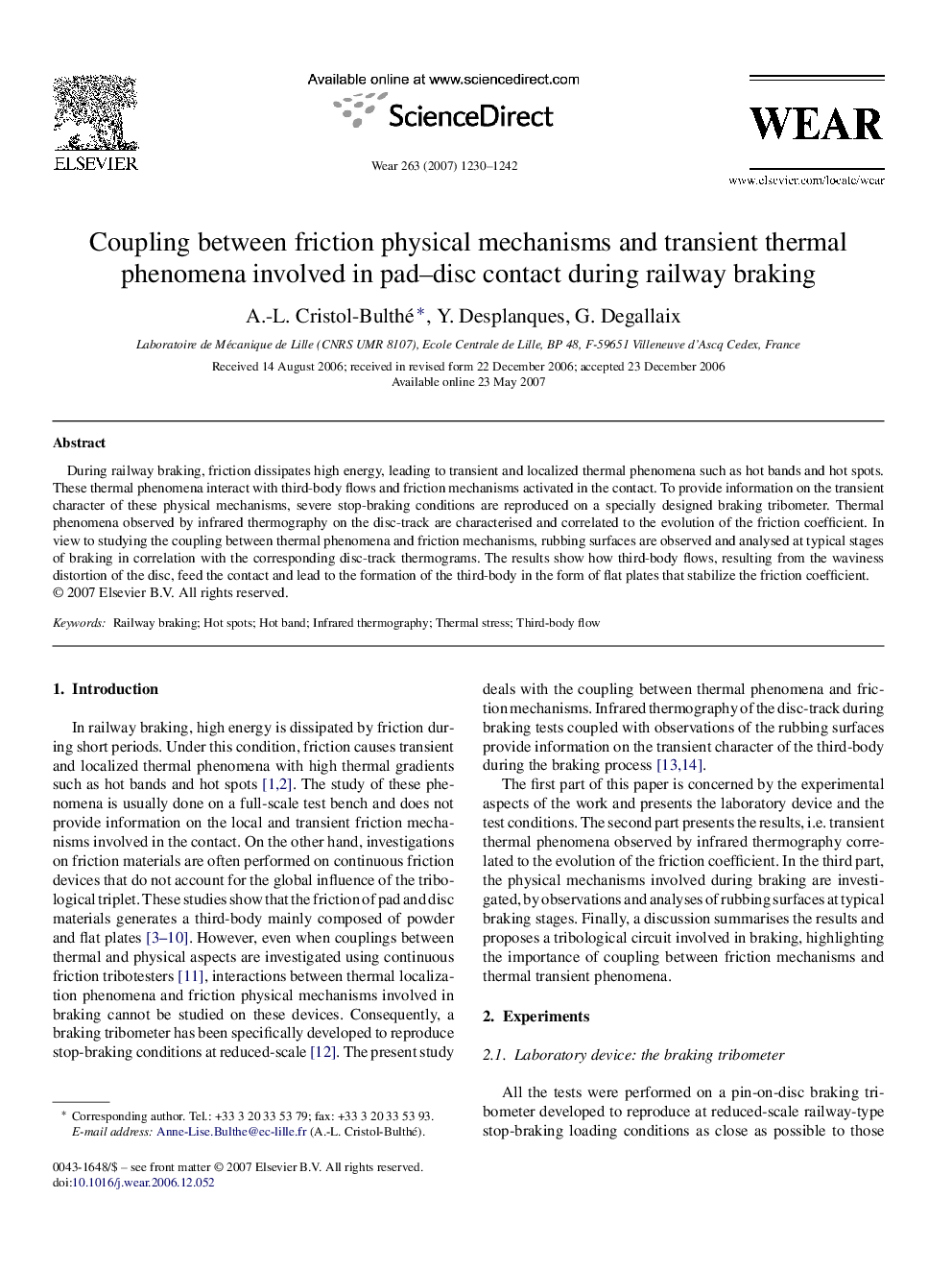| Article ID | Journal | Published Year | Pages | File Type |
|---|---|---|---|---|
| 620017 | Wear | 2007 | 13 Pages |
Abstract
During railway braking, friction dissipates high energy, leading to transient and localized thermal phenomena such as hot bands and hot spots. These thermal phenomena interact with third-body flows and friction mechanisms activated in the contact. To provide information on the transient character of these physical mechanisms, severe stop-braking conditions are reproduced on a specially designed braking tribometer. Thermal phenomena observed by infrared thermography on the disc-track are characterised and correlated to the evolution of the friction coefficient. In view to studying the coupling between thermal phenomena and friction mechanisms, rubbing surfaces are observed and analysed at typical stages of braking in correlation with the corresponding disc-track thermograms. The results show how third-body flows, resulting from the waviness distortion of the disc, feed the contact and lead to the formation of the third-body in the form of flat plates that stabilize the friction coefficient.
Related Topics
Physical Sciences and Engineering
Chemical Engineering
Colloid and Surface Chemistry
Authors
A.-L. Cristol-Bulthé, Y. Desplanques, G. Degallaix,
